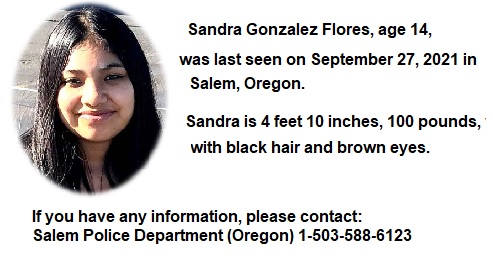The latest news stories across the state of Oregon from the digital home of the Oregon coastal cities, OregonBeachMagazine.com
Monday, November 1, 2021
Oregon Beach Weather
Today– Rain, mainly before 2pm, then a chance of showers after 2pm. High near 58. Breezy, with a southeast wind 8 to 15 mph becoming south southwest in the afternoon. Winds could gust as high as 25 mph. Chance of precipitation is 90%. New precipitation amounts between a tenth and quarter of an inch possible.
Tuesday– A 40 percent chance of rain. Mostly cloudy, with a high near 60. East southeast wind 7 to 9 mph.
Wednesday– Rain, mainly after 11am. High near 63. South southeast wind around 7 mph. Chance of precipitation is 80%. New precipitation amounts of less than a tenth of an inch possible.
Thursday– Rain. High near 59. Breezy. Chance of precipitation is 90%.
Friday– Rain likely. Mostly cloudy, with a high near 57.

Fatal Crash East of Tillamook
The Tillamook County Sheriff’s Office said it assisted Oregon State Police with the three-vehicle fatal crash that occurred on Highway 6 near milepost 9. The crash occurred at around 4:15 a.m.

Highway 6 was closed nine miles east of Tillamook early Sunday morning while law enforcement officials responded to the deadly crash.
According to Sgt. Jason Hopkins from the Tillamook County Sheriff’s Office, one person died in the crash. One person was taken by a Life Flight helicopter to a hospital and two other people were transported by ambulances to the emergency room.
One of the drivers involved in the crash fled the scene, but the sheriff’s office said police located the driver. Investigators used reverse 911 calls to residents in the area to let them know they were searching for the person.
The highway reopened shortly after 10:35 a.m. Oregon State Police is investigating the crash.
Rare Beaked Whale Spotted Off Oregon Coast
A team of marine researchers from Oregon State University’s Marine Mammal Institute caught a rare sighting of Hubb’s beaked whale, a shy animal that we know very little about. The team, led by Institute Director Lisa Ballance, was 200 miles off the Oregon coast when their hydrophone picked up some unusual whale song.
The team intended to hunt for these whales in the Great Pacific Garbage Patch, where sightings were reported in 2014, but engine troubles forced them to look closer to shore. This turned out to be fortunate for the team. The strange whale song they picked up belonged to the very whales they wanted to study.
Two whales surfaced near the ship and followed it, close enough for the team to collect small skin samples. They were also able to record the beaked whale’s audio, which marks the first time researchers have positively matched the Hubb’s beaked whale to its song.
“Linking the acoustic call with a visual description of a poorly known whale… is an extremely powerful tool. Because instantly we know the animal occurs everywhere that call has been recorded,” said Ballance.
Beaked whales are rarely spotted because they spend their lives largely in the open ocean, far from shore, diving more than 1000 meters deep to feed, probably on squid and fish. Their elusive behavior might, in part, represent a way to avoid killer whales, which prey on them. Beaked whales also remain largely silent until they are deep enough to avoid their black-and-white cousins, surfacing infrequently to refill their lungs.
Much of what’s known about this whale family comes from dead beaked whales that wash ashore. But the emergence of genetic testing and underwater listening devices has begun to shed more light on the animals. DNA enables scientists to figure out when they have found a new species. And microphone-wielding researchers have learned over the past decade that many beaked whale species emit distinctive chirps used for echolocation while hunting prey in the dark depths.
The team is working on publishing their findings next year.
Mapleton Residents Face Water Shut-Off as They Refuse to Pay Super Inflated Water Bills
The town of Mapleton is in turmoil over its water services. Residents say the Water District Board hasn’t been honest with them after unusually high water bills earlier this year.
“They’re gonna shut people off on November 1st,” says one resident, after many refused to pay high bills earlier this year. “In February, out of nowhere, we got these crazy high bills. Some families got over $4,000 water bills when they’d been paying $80, $100 per month consistently.”
The issue appears to be the town’s water meters that are apparently so old they are unreadable.
After some back and forth, the water district credited 50% of high February bills. But many residents still aren’t happy.
The February bills aren’t the first problem with Mapleton’s water. The town was under a boil water order for nearly five months in 2020.
Residents say those persistent issues have led to high turnover within the board, including the superintendent retiring earlier this year.
“Admittedly, we were having some board turnover. And it’s always ongoing,” says Dustin Basurto, incoming superintendent and vice chair of the board for the Mapleton Water District.
It’s an issue Basurto doesn’t deny. “Regaining the trust of the community, after you’ve lost it, it’s hard to regain,” he replied. “It was a scramble for a long time and we were really behind the ball.”
Now Basurto trying to play catch-up, getting advice from neighboring water districts and calling in the Oregon Association of Water Utilities for a rate survey and sending out a survey to get community feedback.
The Water District has received millions in recent grants and from the American Rescue Plan. Basurto says those funds will go to replace those old meters – and the entire water plant.
Basurto invites any resident with bill issues to sort them out, on a case-by-case basis, by coming to the Water district or by calling them at (541) 268-4348.
The next board meeting will be Tuesday, Nov. 9. The next election cycle is May of 2022.

Oregon reports 1,420 new confirmed and presumptive COVID-19 cases, 14 new deaths
There are 14 new COVID-19 related deaths in Oregon, raising the state’s death toll to 4,372. Oregon Health Authority reported 1,420 new confirmed and presumptive cases of COVID-19 bringing the state total to 365,053.
The new confirmed and presumptive COVID-19 cases reported today are in the following counties: Baker (4), Benton (24), Clackamas (112), Clatsop (6), Columbia (23), Coos (20), Crook (18), Curry (1), Deschutes (109), Douglas (30), Harney (10), Hood River (6), Jackson (82), Jefferson (21), Josephine (33), Klamath (37), Lake (3), Lane (99), Lincoln (13), Linn (82), Malheur (25), Marion (178), Morrow (1), Multnomah (213), Polk (26), Sherman (4), Tillamook (10), Umatilla (29), Union (7), Wallowa (2), Wasco (14), Washington (140) and Yamhill (38).


Marketplace offers quality health coverage and financial help to thousands of Oregonians: People have until Dec. 15, 2021, to enroll in health insurance starting Jan. 1, 2022

(Salem) – Big changes have come to eligibility for financial help with health insurance through the Oregon Health Insurance Marketplace this year. Many of the changes are carrying over to health coverage in 2022, which means Oregonians will see heavy reductions to their monthly premiums if they enroll through the Marketplace during open enrollment.
2021 brought a 46 percent reduction in average monthly premium for Marketplace-enrolled Oregonians after financial help. These extra savings brought the average monthly premium down to just $84 per month due to expansion of eligibility for financial help from the American Rescue Plan.
Wading through health coverage options can be difficult. Health coverage experts throughout the state are available to help with applying for financial assistance and choosing private plans. Consumers can also browse plans and find out how much savings they are eligible for by going to OregonHealthCare.gov/WindowShop.
Oregonians who do not get health insurance through their job or a public program such as the Oregon Health Plan or Medicare may qualify for help paying for 2022 coverage at OregonHealthCare.gov. Though this year’s open enrollment deadline is Jan. 15, 2022, people who want their health coverage to start Jan. 1, 2022, must sign up by Dec. 15, 2021. Even if people are temporarily uninsured, they can sign up for help by the Jan. 15 deadline to get health insurance for next year.
“We’ve seen Oregonians enroll in health coverage for only $1 per month,” said Chiqui Flowers, administrator of the Oregon Health Insurance Marketplace. “If you previously applied and didn’t qualify for financial help, now is the time to try again. You will likely see significant savings on quality health coverage for 2022.”
To apply, go to OregonHealthCare.gov before Jan. 15, 2022, and answer a few questions to get to the right application or search the directory of health coverage experts by selecting “Get Help” on the site. Health coverage experts are licensed insurance agents and community partners who provide local, one-on-one assistance at no charge to the client. This help is available virtually and over the phone, and in person following COVID-19 safety protocols.
The Oregon Health Insurance Marketplace, a part of state government, helps people get health insurance when they do not have job-based coverage, and do not qualify for the Oregon Health Plan or another program. The Marketplace is the state-level partner to HealthCare.gov. For more information, go to OregonHealthCare.gov.
Oregon Lowers the Unemployment Tax Rate for 2022
The Employment Department has good news for Oregon employers contributing to the Unemployment Insurance (UI) Trust Fund. Oregon is lowering the payroll tax rate to an average rate of 1.97 percent (tax schedule three) for the 2022 calendar year. This is down from an average rate of 2.26 percent (tax schedule four) in 2021. House Bill 3389 allows Oregon to lower tax rates when other states are increasing UI tax rates and continuing to borrow funds.
In Oregon, the state deposits money collected from state payroll taxes into a trust fund that is used to pay UI benefits to unemployed Oregon workers. Oregon’s trust fund, which is on track to remain solvent through the next recession, is one of the healthiest in the nation. This is due to the “self-balancing” tax structure used to fund it. Oregon’s “self-balancing” tax structure is based on two major components:
- Movement between eight tax schedules: When the tax schedule changes, all employers move to that tax schedule for the year. Oregon’s schedules are designed to provide sufficient trust fund reserves to cover 18 months of a recession. Oregon lowers these taxes when the economy is poor and then raises them in times of recovery to replenish the trust fund. Schedule four is considered the equilibrium.
- Assigning individual employers a tax rate within the yearly tax schedule based on their unique ‘experience rating’: ‘Experience ratings’ are based on the number of former employees who go on to receive UI benefits. If an employer lays off a significant number of employees, their experience rating will go up, and their unemployment taxes will go up the following year.
Recognizing the hardships experienced by employers during the pandemic and the critical role they play in the state’s recovery, the Oregon Legislature passed House Bill 3389, and the Governor signed it into law on July 27, 2021. The law expands ongoing efforts to help employers affected by the pandemic, and it is projected to save Oregon employers $2.2 billion over the next 10 years.
HB 3389 provides three types of unemployment insurance (UI) tax relief for Oregon employers. First, it changes how the statewide UI tax schedule is calculated, extending the “look-back period” for the Fund Adequacy Percentage Ratio (FAPR) from 10 to 20 years, and omits calendar years 2020 and 2021 from the 20-year look-back period. The goal is to replenish the UI Trust Fund enough to withstand a significant recession, similar to the Great Recession. Without the adjustment of HB 3389, the state would have had to incorporate the pandemic recession into the ‘savings targets’ for the UI Trust Fund. The bill helped lower the anticipated tax schedule for 2022 from schedule four to schedule three.
For individual employers, HB 3389 keeps the same experience ratings used to determine their 2020 UI tax rates to determine their rate for 2022 – 2024. This protects employers from the impacts of the pandemic, when many had to either let their employees go or reduce their hours to meet statewide safety precautions. HB 3389 keeps their unemployment taxes from going up as a result.
In addition, HB 3389 allows eligible employers to defer up to one-third of their 2021 UI tax liability until June 30, 2022, without accruing interest or penalties on deferred amounts. It also allows some employers to receive full or partial forgiveness of their deferrable liability based on how much their UI tax rate increased from 2020 to 2021.
The department will mail individual 2022 tax rate notices to employers on Monday, November 15, 2021. Any employer who has not received their notice by November 22, 2021, should contact the Employment Department Tax Section at OED_Taxinfo_User@oregon.gov or call 503-947-1488. Due to the projected high call volume, employers may receive a quicker response by emailing the department. More information is on our employer taxes webpage.
Employers can request this information in a different language by sending a request to OED_Taxinfo_User@oregon.gov.
Oregon Dept. of Consumer & Business Services – Share your experiences about prescription drug prices

Salem – The Oregon Department of Consumer and Business Services is asking for the public’s help before its third annual public hearing on prescription drug prices.
The department set up a brief survey – http://dcbspage.org/RxStories – for consumers to ask questions and share their stories about rising prescription drug prices.
Drug prices play a major role in health care decisions of Oregonians and the cost of prescription drugs have steadily increased in the past 10 years. The department wants to know what questions you have about the increase in prescription drugs and how has it affected you and your family.
The hearing is scheduled for 1 to 3 p.m. Wednesday, Dec. 8.
The Prescription Drug Price Transparency Act (ORS 646A.689) directed the Oregon Department of Consumer and Business Services to establish a transparency program to accept reports and disclose certain information from prescription drug manufacturers, health insurance carriers, and consumers on drug prices.
The goal of the program, which is part of the Division of Financial Regulation, is to provide accountability for prescription drug pricing through the notice and disclosure of specific drug costs and price information from pharmaceutical manufacturers, health insurers, and consumers.
For more about the program, go to dfr.oregon.gov/drugtransparency. Information about how to participate in the virtual hearing will be available on this site, as well.
Habitat Conservation Plan Goes to Legislature
After nearly ten months of negotiations between private forestry representatives, small forestland owners, conservation leaders, and fishing organizations have resulted in a historic proposal for new protections for sensitive species on over 10 million acres of forestland in Oregon.
Governor Brown made the announcement on Saturday, October 30, stating that the proposal seeks to meet the federal standards for a statewide Habitat Conservation Plan. The framework of the agreement consists of riparian buffers for streams, rivers and bodies of water, steep slopes protection to minimize erosion and protect habitats, work on an approach moving forward to improve forest roads and work towards a path to make adjustments and adaptation to forest practices in the future.
The legislation will be brought forward to the Oregon Legislature to solidify the Private Forest Accords in statute. The State will bring forward the proposal for consideration by NOAA Fisheries and the US Fish and Wildlife Service as a Habitat Conservation Plan.
Oregon Leaders Request Declaration of Fishery Disaster
A delegation of Oregon leaders — including Senators Ron Wyden and Jeff Merkley and Representatives Suzanne Bonamici, Kurt Schrader, and Peter DeFazio — wrote to the U.S. Department of Commerce urging them to declare a catastrophic regional fishery disaster. Three years of drought in a row have severely impacted the Pacific Northwest’s salmon populations.
The Chinook salmon population has been steadily losing value, going from $6.3 million annually from 2013-2017 to $1.4 million in 2020.
“[T]he challenging impacts of climate change, increased drought, and changing ocean conditions complicate the recovery of salmon populations in the Pacific Northwest,” lawmakers wrote. “Federal support for this industry is critical while local, state, and federal partners continue to work toward long-term solutions.”
“In addition to the economic activity generated by this industry, salmon are an important part of the cultural heritage of Pacific Northwest tribes, generate recreational activity, and are a treasured natural resource across the state.”
Rancher Suing Construction of Lithium Mine
A Nevada rancher suing to block construction of the largest lithium mine in the U.S. says the government’s environmental assessment of the project relies on a baseline set by a consultant for the mining company with a conflict of interest that trivializes potential harm to water resources and wildlife near the Oregon line.
Bartell Ranch LLC wants a U.S. judge to order the Bureau of Land Management to provide documents, contracts and internal communications with all third-party consultants the agency used to reach its conclusion that Lithium Nevada Corp.’s mine won’t affect threatened species or significant scientific, cultural or historic resources.
The ranch filed a lawsuit in February challenging plans for the Thacker Pass mine it says would rob the ranch of its precious water rights. The case has been consolidated with lawsuits subsequently filed in U.S. District Court in Reno by conservation groups and tribes alleging the mine would destroy critical sage grouse habitat and damage sacred tribal lands that were the site of a massacre in the 1860s.
Time To Renew Expired Oregon Licenses, IDs, And Vehicle Registration Ends December 31st
Time is running out to renew expired vehicle registration, driver licenses, and ID cards in Oregon before a year-end rush and the looming possibility of citation, the Oregon Department of Transportation reminded on Thursday.

Oregon has had a moratorium in place, started during the height of the COVID-19 pandemic shutdowns, that kept law enforcement from citing for expired documentation. That moratorium ends December 31, and ODOT warns that it’s best to take care of any issues as soon as possible, before the rush sets in.
Starting in November, the DMV will mail about 300,000 Oregon residents who have expired vehicle registrations, urging them to renew before the end of the year. This mailing is in addition to the usual reminder that the DMV sends a few weeks before your vehicle’s tags expire.
There will not be a second reminder for expired licenses, permits and ID cards.
“You might receive a reminder in the mail even if it doesn’t seem to apply to you,” DMV Administrator Amy Joyce said. “Did you sell your car? If you didn’t notify DMV, we might still show you as the owner. Protect yourself from parking tickets and towing charges: go on-line and notify us of the sale.”
The current moratorium was passed by the legislature this year, but it is the last in a series of grace periods granted to give Oregonians more time to renew at the DMV while COVID-19 restrictions impact availability.
Oregon has added more online feature through the DMV to cut down on the in-person visits required. Before you go to a DMV office, visit DMV2U to see if you can get your service online – or make sure you have what you need to bring to an office.
“To help Oregonians get DMV services during the pandemic, we’ve added many new online options,” Joyce said. “We have caught up with the COVID-19 backlog enough that about half our visits to field offices are by appointment, and the other half are standby.”
“Going forward, customers will continue to have the option of making an appointment online through DMV2U or dropping by, as well as more choices online,” Joyce continued. “Anytime you need a DMV service, check DMV2U first and see if you can save yourself time and a trip.”
Also, starting in May of 2023, you will need a federally recognized form of identification to fly. This includes passports, but will otherwise require a Real ID-compliant identification card. This needs to be done in-person at a DMV location.









https://www.facebook.com/pg/Have-You-Seen-Me-Southern-Oregons-Missing-People-161249961222839/posts/

